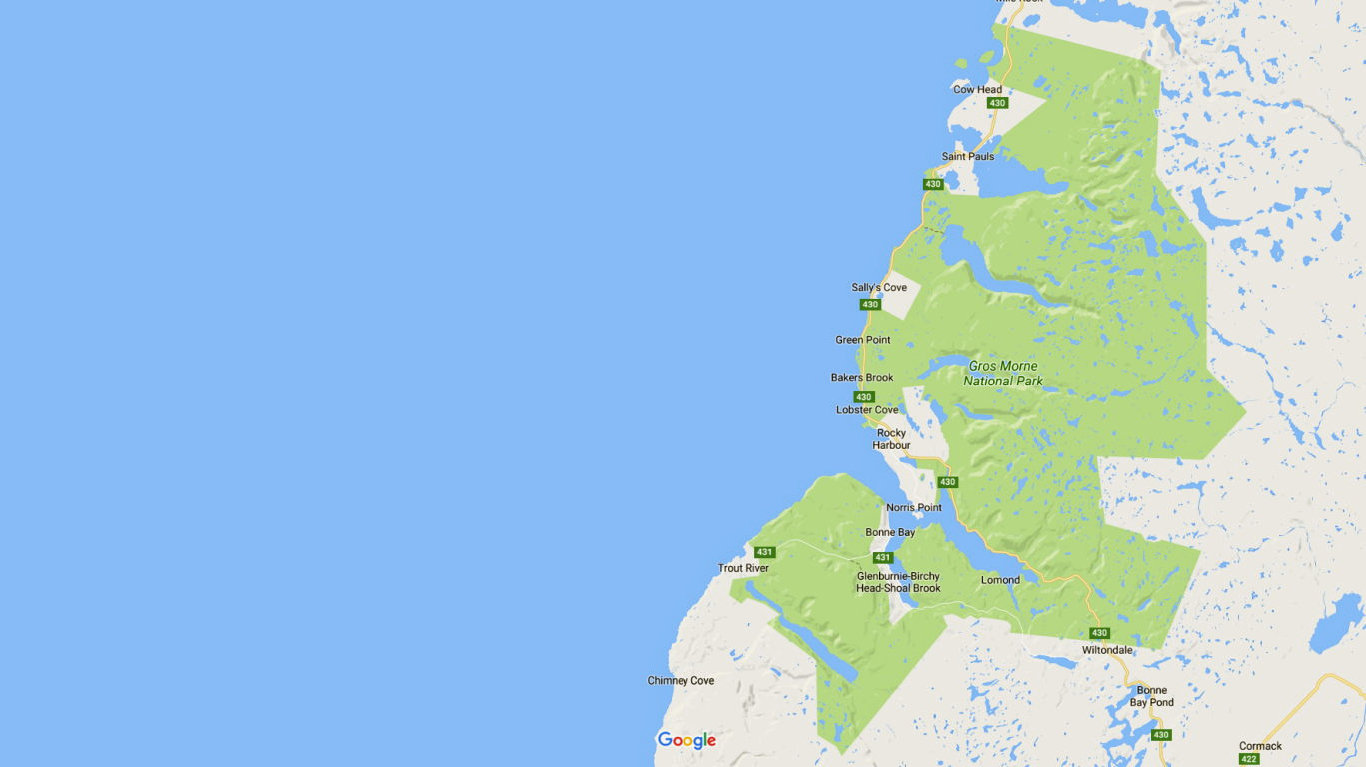The park was established in 1973 and became a UNESCO World Heritage SIte in 1987.
Gros Morne has a
interesting and diverse geology. Half a billion years ago Plate tectonics started pushing material from the earth's deep mantle all
the way up to the surface and thus created the unique and colorful Tablelands.
During the last ice age huge glaciers descended from
the Long Range Mountains into the sea and in the process grinded deep scars into the rocks. When the ice receded and the land
lifted, it formed the fjords at Bonne Bay and the fabulous freshwater lake at Western Brook Pond.
Dense forests,
waterfalls, steep cliffs and muggy peat bogs complete the diverse and scenic landscape.
Moose, caribou and black bear roam
free in the park, and several species of birds and plants have found their biotope here.
Gros Morne can best be explored on foot
on the many well-maintained hiking trails and by joining a scenic boat tour over the Western Brook Pond or Bonne Bay.
Facilities
are rather scarce in the park, most services are concentrated in the Rocky Harbour area.
Trout River is a remote fishing
village that can be reached by car via a scenic road through the Tablelands.



